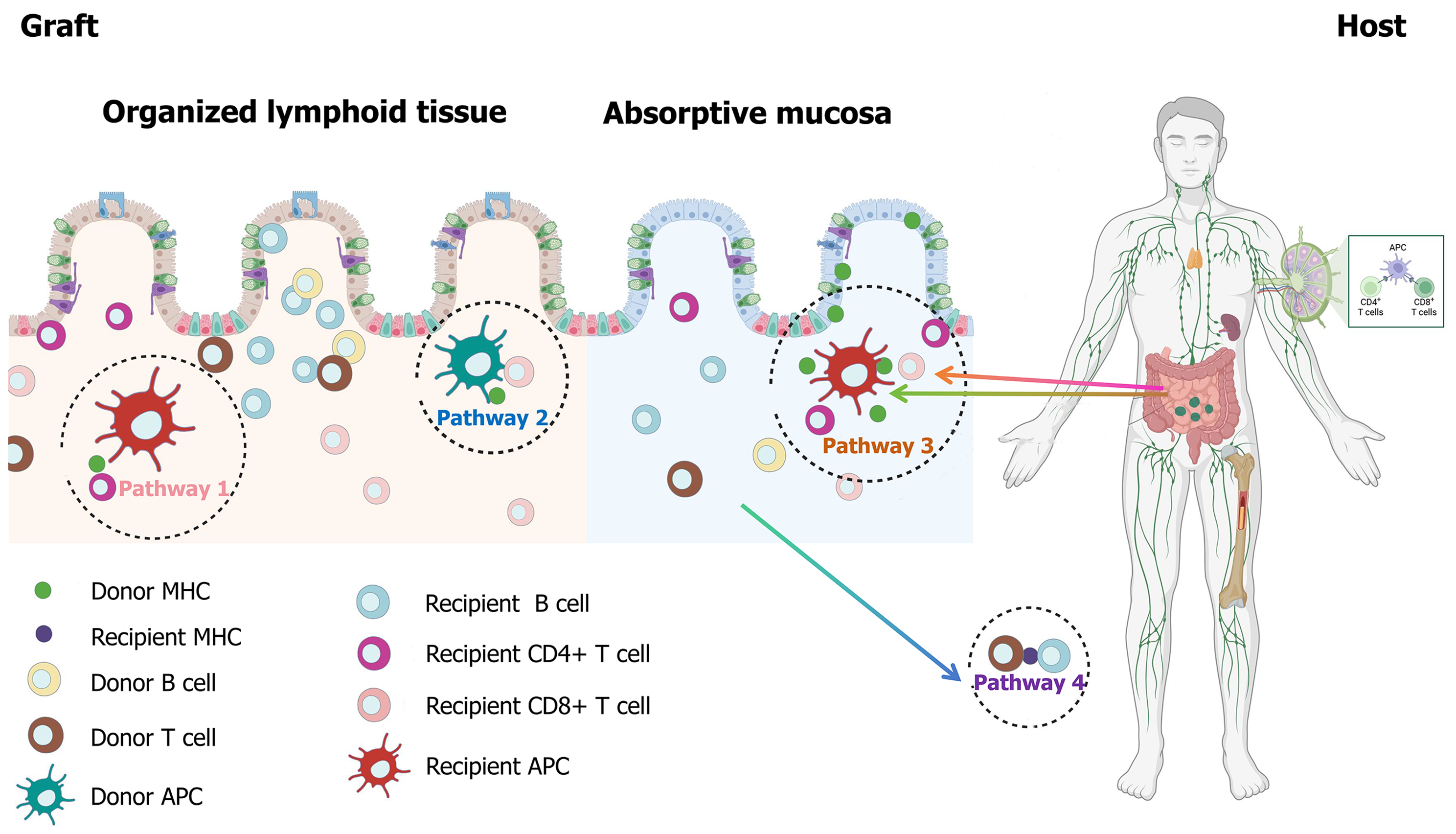Copyright
©The Author(s) 2025.
World J Gastrointest Surg. Oct 27, 2025; 17(10): 111672
Published online Oct 27, 2025. doi: 10.4240/wjgs.v17.i10.111672
Published online Oct 27, 2025. doi: 10.4240/wjgs.v17.i10.111672
Figure 1 The historical development and challenges of intestinal transplantation.
TPN: Total parenteral nutrition; ITx: Intestinal transplantation; CR: Chronic rejection; AMR: Antibody-mediated rejection; FMT: Fecal microbiota transplantation; JAK: Janus kinase.
Figure 2 Schematic representation of the multiple pathway activation mechanisms of the anti-graft response in the intestinal transplant host.
Pathway 1: Direct pathway [donor antigen-presenting cell (APC) presenting donor MHC]; Pathway 2: Indirect pathway (recipient APC presenting donor MHC acquired by endocitic pathway); Pathway 3: Semi-direct pathway (recipient APC presenting donor MHC acquired by membrane vesicles); Pathway 4: Inverted direct pathway (donor T cells is activated by recipient MHC presented by recipient B cells). Organized lymphoid tissue in the graft significantly enhances the alloimmune response. It should be noted that pathways 1-3 can occur both in the absorptive mucosa and in the organized lymphoid tissue. All four pathways are activated in the early post-transplantation period, whereas only pathways 2 and 3 persist in long-surviving grafts. APC: Antigen-presenting cell.
- Citation: Rong Y, Nie CY, Zhou JD, Wang ZC, Wu DL, Wu SW, Xie ZY. Intestinal reengineering: Scientific advances in intestinal transplantation. World J Gastrointest Surg 2025; 17(10): 111672
- URL: https://www.wjgnet.com/1948-9366/full/v17/i10/111672.htm
- DOI: https://dx.doi.org/10.4240/wjgs.v17.i10.111672














